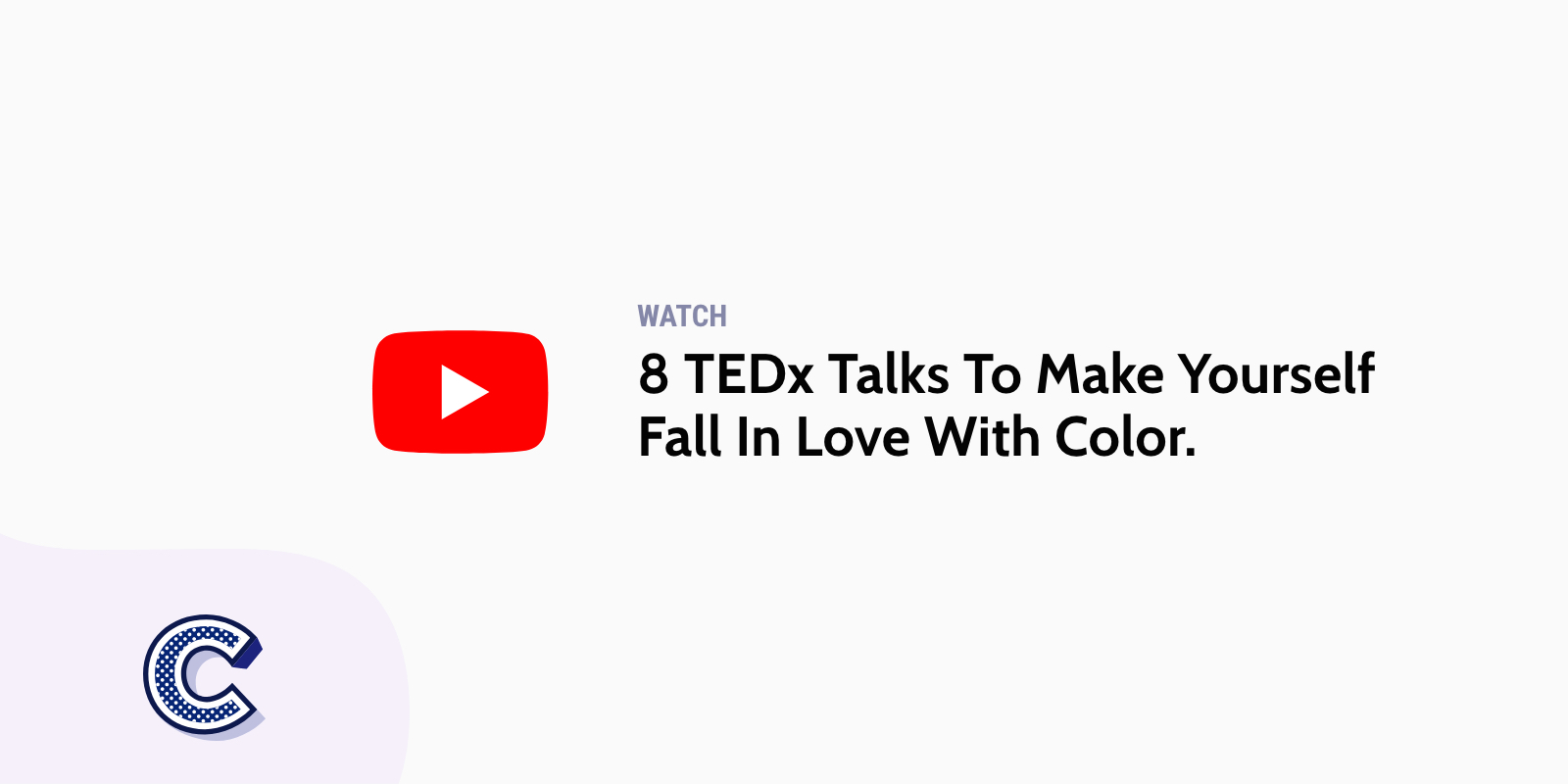breadcrumb

8 TEDx Talks To Make Yourself Fall In Love With Color
TED is the abbreviated form of Technology, Entertainment, and Design. Talks are short and haunch. The presentations are from experts on science, design, business, technology, economics, education, and more. TED Talks is one of the best infotainment out there. If you haven’t seen any of the videos from TED’s popular conferences, then you’ are definitely missing out. There’s so much that you can learn from TED Talks – not only from the aspect of their content but also from their delivery. TEDx event is a local gathering where live TED-like performances and talks are shared with the community.
The emotions are very different when you watch the video and when attending a TED(x) event. You’re in the same room with some accomplished beings whom you would never meet in usual daily life, and yet you feel like you are together. You don’t feel any distance from the TED speaker, staff, or the attendees. This happens because everyone is walking casually around space.
I’ve discovered some inspired TEDx Talks about color. The videos of TEDx talks give an approach to the importance of color in our daily lives, from the perspective of the designer to the human.
Put your laptop or tablet, settle in, and get ready to be inspired by 8 of TEDx Talks.
Riley Johnson – The Psychology of Color
You’ll be surprised to learn how much color influences our moods, our choices, and our lives. Riley Johnson is a junior in high school and loves acting, drawing, painting, and writing. When it comes to art, she frequently uses color psychology to achieve certain effects with her pictures. She hopes you all find a topic as simple as colors to be interesting.
Andrew Parker – Does Colour Exist?
Andrew Parker studied marine biology and physics at the Australian Museum and Macquarie University and then moved to Oxford University. After founding the ‘Light Switch Hypothesis’ – that the Big Bang of evolution was triggered by the evolution of the eye –he now works on biomimetics, copying good design found in nature. This includes hummingbird colours for paints, non-reflective surfaces on insect eyes for solar panels, and water-capture devices in Namibian beetles for collecting clean drinking water in Africa.
Kolby Harrell – Love and Basic Color Theory
Shades of gray are hard to explain, so we simplify. But buying into arbitrary social constructions helps to perpetuate stereotypes. Kolby talks color theory, and how that can be applied, similarly, between people.
Axel Buether – The Language of Color – Effects on our Experience and Behaviour
How do different colors influence our lives, interactions and subconsciousness? Prof. Dr. Axel Buether has started his career as a stone mason. After finishing his traineeship, he studied architecture, gaining a doctorate in the interdisciplinary area of neuropsychology and design with a thesis on the semiotics of perceptual space. Since then, he worked on a variety of architecture, design and media art projects.
Bryan Kett – It’s Not Easy Seeing Green: The Complexities of Color Blindness
Storyteller, scientist and humorist, Bryan Kett, shares a witty poignant tale on the science of color blindness and how the reconciliation of seeing things differently can be a catalyst for acceptance. By exploring the genetics, social implications, philosophical elements, and technological advancements surrounding color blindness, Bryan digs into the larger idea of how perspective is relative. After all, since we cannot see through each other’s eyes, who is to say what defines green…or red…or blue?
Blake Augustine – Personality Type and Color Preference
Should placebos be used in medicine? A young researcher uncovers the link between color, personality, and placebos. Blake Augustine is a student-athlete and currently plays Football and Basketball at Thousand Oaks High School. He is a part of Thousand Oaks’ Center for Advanced Studies and Research, a two-year applied, undergraduate-level research program.
Pupa Gilbert – Color : Physics and Perception
The perceived color is more than the simple wavelength of light, because additive neurons in the eye produce it. Imaginative demos show how these neurons work, and how they are fooled by computer and cell phone screens so we see a myriad colors when in fact there are only three. Pupa Gilbert, professor of physics, artist, and author of the “Physics in the Arts” book, clearly and simply explains the complexities of color vision and illusions. Bring your own eyes!
Alexa Meade + Jon Boogz – Color of Reality: Painting and Movement Artist
The perceived color is more than the simple wavelength of light because additive neurons in the eye produce it. Imaginative demos show how these neurons work, and how they are fooled by computer and cell phone screens so we see myriad colors when in fact there are only three. Pupa Gilbert, professor of physics, artist, and author of the “Physics in the Arts” book, clearly and simply explains the complexities of color vision and illusions. Bring your own eyes!